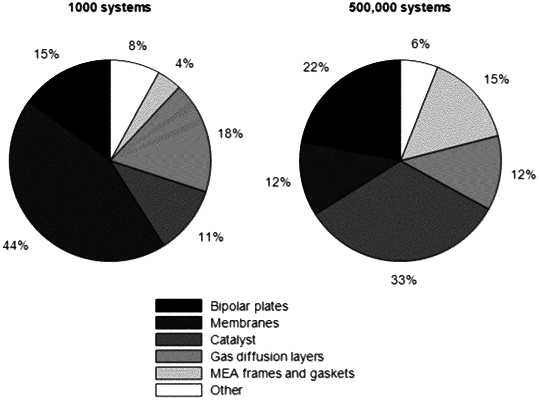| CPC H01M 8/0243 (2013.01) [H01M 4/622 (2013.01); H01M 4/80 (2013.01); H01M 8/0234 (2013.01); H01M 8/0239 (2013.01)] | 8 Claims |

|
1. A method of preparing a porous fuel cell bipolar plate article, the method comprising:
blending an amount of conductive carbon particles, a polymeric binder, and a porogen to form a paste;
molding the paste into shape by heating the mold to obtain a plate precursor; and
removing the porogen from the plate precursor to obtain the porous fuel cell bipolar plate article;
wherein the porous fuel cell bipolar plate article is characterized by a bubble pressure higher than 15 psi, a wick-fill mass gain between 10 wt % to 60 wt %, a vacuum-fill mass gain between 10 wt % to 70 wt %, an electrical conductivity higher than 100 S/cm, and a flexural strength higher than 25 MPa;
wherein the amount of conductive carbon particles comprises 75 to 90 wt %, the polymeric binder comprises 10 to 20 wt %, and the porogen comprises up to 15 wt % and is selected from the group consisting of sucrose, salt, and poly(ethylene glycol).
|